Belovezhskaya Pushcha / Białowieża Forest: Białowieża National Park in Poland and National Park Belovezhskaya Pushcha in Belarus are protecting the last remaining parts of the primeval forest that once stretched across the Great European Plain: the Białowieża Forest. The border between Poland and Belarus runs through the immense Białowieża Forest. The primeval forest of Białowieża dates back to 8000 BC. The forest is home to animals such as the wolf, lynx, otter, red deer and wisent (European bison), and 120 species of breeding birds such as the crane and white-backed woodpecker. The Białowieża Forest is home to the largest free-living European bison population in the world, the forest is home to more than 900 wild European bison, some 500 in the Polish part of the Białowieża Forest. The European bison is the tallest European land mammal and the symbol of Białowieża National Park, the oldest national park in Poland. The park was founded in 1921. Białowieża National Park is located about 225 km east of Warsaw. Białowieża Forest gained the status as a UNESCO World Heritage in 1979, site was extended in 1992 to include the Belovezhskaya Pushcha (Białowieża Forest) in Belarus. Białowieża Forest is a natural UNESCO World Heritage. World Heritage Art: Shadows in Białowieża Primeval Forest and Shadows in Białowieża
www.werelderfgoedfotos.nl © Copyright World Heritage Photos
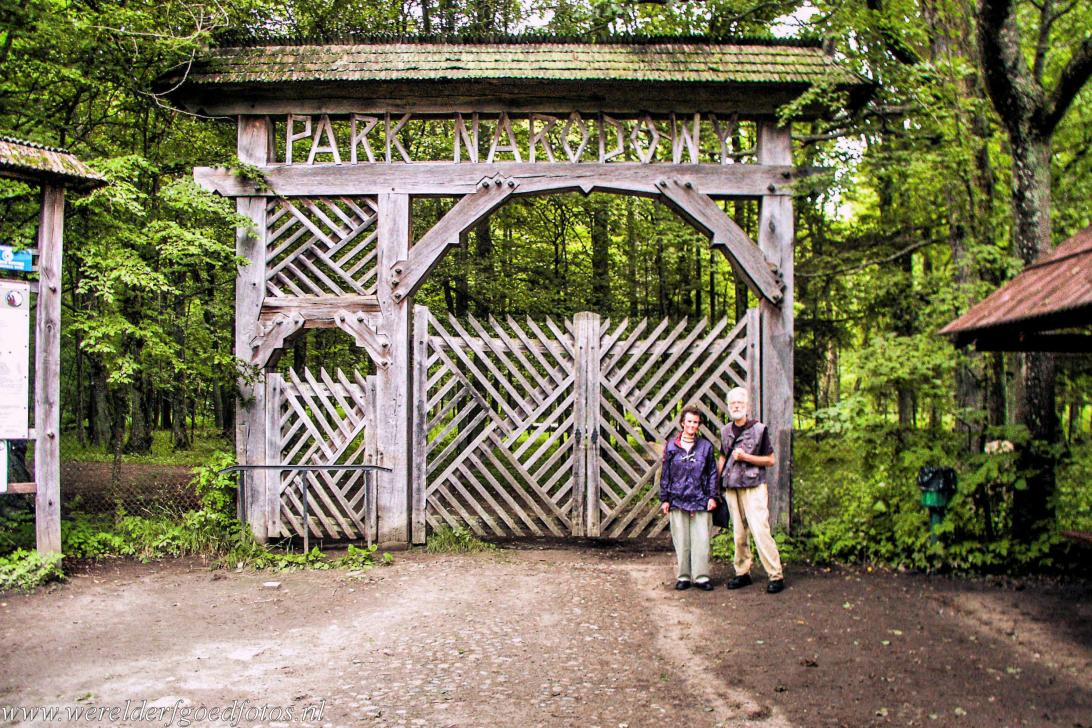
The wooden entrance gate of the Polish Białowieża National Park. A part of the primeval forest of Białowieża is situated inside a protected area. The Białowieża National Park in Poland and the Belovezhskaya Pushcha in Belarus are protecting the Białowieża Forest, the last remaining parts of the primeval forest that once stretched across the Great European Plain.

The wooden entrance gate of the Polish Białowieża National Park. A part of the primeval forest of Białowieża is situated inside a protected area. The Białowieża National Park in Poland and the Belovezhskaya Pushcha in Belarus are protecting the Białowieża Forest, the last remaining parts of the primeval forest that once stretched across the Great European Plain.
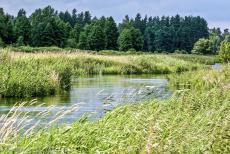
Białowieża National Park: The wetlands of the Białowieża Forest are among the most important wetlands of Europe. The Białowieża National Park on the border between Belarus and Poland protects the last remnants of a vast primeval mixed deciduous and coniferous forest that once covered the Great European Plain. The primeval forest of Białowieża dates back to 8000 BC.
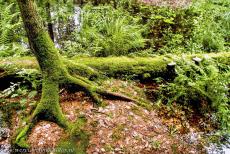
Białowieża Forest: Moss-covered trees in the primeval forest of Białowieża. The forest is home to animals such as the beaver, lynx, otter, red deer, wolf and wisent, the European bison, there are more than 500 wisent living in the Polish part of the Białowieża Forest. Also a wide variety of birds species live in the Białowieża Forest, the birds use the forest for nesting and breeding.
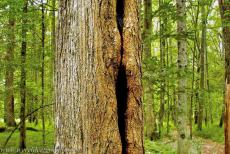
Białowieża primeval forest: A tree damaged by frost. A primeval forest is not affected by human intervention. A primeval forest is often the habitat to many rare, threatened and endangered species of animals and plants. The primeval forest of Białowieża is protected in the Białowieża National Park and is only accessible with a licensed guide.
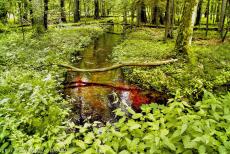
Belovezhskaya Pushcha / Białowieża Forest: A small stream flows through the primeval forest of Białowieża. Wet woodlands and swamps occupy large parts of Białowieża Forest. Centuries old trees grow in Białowieża Forest such as elm, beech, oak and lime. The forest floor is covered by ferns and other plant species such as Isopyrum and kingcup.
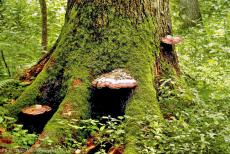
Białowieża Forest: Several red belted fungi growing on a tree, thousands of fungi species can be found in the primeval forest of Białowieża. The forest is home to more than 250 species of birds. Białowieża is also home to rare bird species such as crane, raven and black stork. The wetlands of Białowieża are the breeding area for the cranes, black storks and several other bird species.
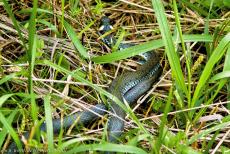
Białowieża National Park in Poland: A snake nearby a footpath. The Białowieża Forest is home to seven reptiles species, thirteen amphibians species and fifty-nine mammal species, among them are unique or threatened species. The Białowieża Forest became a UNESCO World Heritage Site in 1979, the site was extended in 1992 to include Belovezhskaya Pushcha in Belarus.
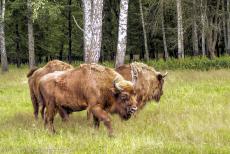
Białowieża National Park: The wisent is the symbol of the Polish Białowieża National Park. The last wild wisent in the Białowieża Forest was killed in 1919. The wisent was reintroduced in 1929. Today, the Białowieża Forest houses the largest free-living population of the wisent in the world. European bison have longer legs and are taller than North American Bison.
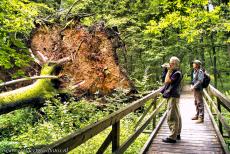
Białowieża National Park: A walk with a licensed guide, a visit to the primeval forest starts at the Białowieża National Park Visitor Centre. Fallen trees are scattered throughout Białowieża Forest. The trees fall in a storm or due to the age of the tree, the fallen trees rot and breakdown, their remains fertilize the ground. They also provide shelter and food for animals, birds and insects.
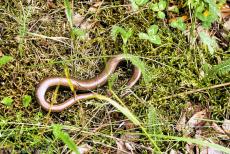
A blindworm nearby a footpath in Białowieża Forest. A blindworm is also named a slow worm. A slow worm is a legless lizard native to Eurasia. The Białowieża Forest is home to seven species of reptiles and thirteen species of amphibians. The Białowieża Forest is the last remaining primeval forest in Europe. A primeval forest is not affected by human intervention.
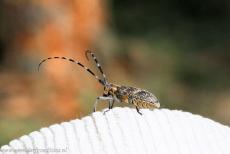
Belovezhskaya Pushcha / Białowieża Forest: The longicorn beetle has extremely long antennae. The longicorn beetle usually lives on dead trees, trunks or branches of old trees, continuously present in the primal forest. The eggs are laid on deadwood or very old oaks. Białowieża Forest is home to an extremely rich variety of insects.
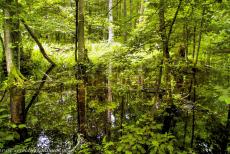
Białowieża Forest / Belovezhskaya Pushcha: Swampy pools are dammed by beavers. Beavers, the largest rodents native in Europe, were reintroduced in Białowieża Forest in 1956. Beavers are able to change the landscape by building dams and create flooded areas. Białowieża Forest in Poland and Belovezhskaya Pushcha in Belarus became a UNESCO World Heritage in 1979.
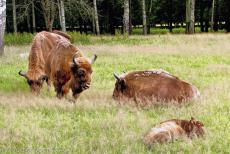
Białowieża National Park: European bison or wisent in the Białowieża Bison Refuge, the wisent is the symbol of Białowieża National Park. Białowieża Forest is home to the largest wisent herd in the world. In the Polish part of Białowieża, the herd is now up to 500 wisent, the Belarusian part of Białowieża is home to 400 wisent. The wisent the largest land animal of Europe.
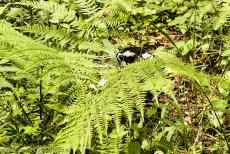
Belovezhskaya Pushcha / Białowieża Forest: A female white-backed woodpecker. The male has a red crown. The white-backed woodpecker lives mainly on berries, nuts and insects, such as the wood-boring beetles as well as their larvae. The Białowieża Forest provide a large number birds species with food, such as worms, larvae, insects and seeds.
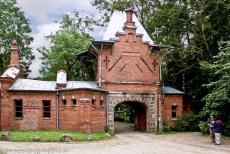
Białowieża National Park: This brick gate house once led to the hunting lodge of the Tsar. The hunting lodge was destroyed during and after WWII. The Russian Tsars owned all of Białowieża Primeval Forest between 1888 and 1917. The forest was the imperial hunting ground. The last major hunt by the Tsar took place in 1912.
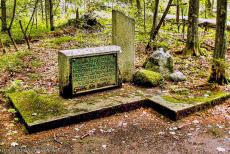
Białowieża National Park: The graves of WWII victims. These victims were murdered by the Nazi Gestapo. the graves can be seen in the primeval forest of Białowieża. During WWII, Białowieża Forest became a refuge for both Polish and Soviet partisans. The Nazi Gestapo organized mass executions of people suspected of helping the partisans.
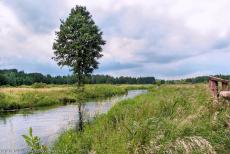
Clouds looming over the wetlands of Białowieża National Park. Białowieża National Park is one of the few places where the original landscape and wildlife of Europe can be seen. Białowieża National Park is the oldest national park in Poland. The park was founded in 1921. Białowieża Forest is a natural UNESCO World Heritage.
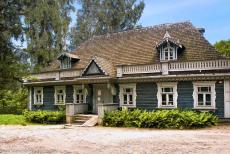
The Hunter's Lodge is the oldest surviving building in the Polish part of Białowieża Forest. The Białowieża Forest was the hunting area of the Russian Tsars and Polish Kings. Białowieża is one of the least populated regions in Poland, it also one of the most important tourist attractions in the northeastern part of the country.
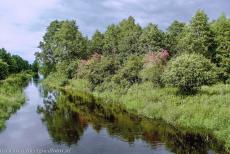
Białowieża Forest is located in northeastern Poland on the border between Belarus and Poland. During the German occupation of Poland in the First World War, thousands of wild boar and red deer were killed by soldiers of the German army and at least two hundred wisent were killed. In 2019, Soviet poachers killed the last wisent. A wisent is also known as the European bison.
